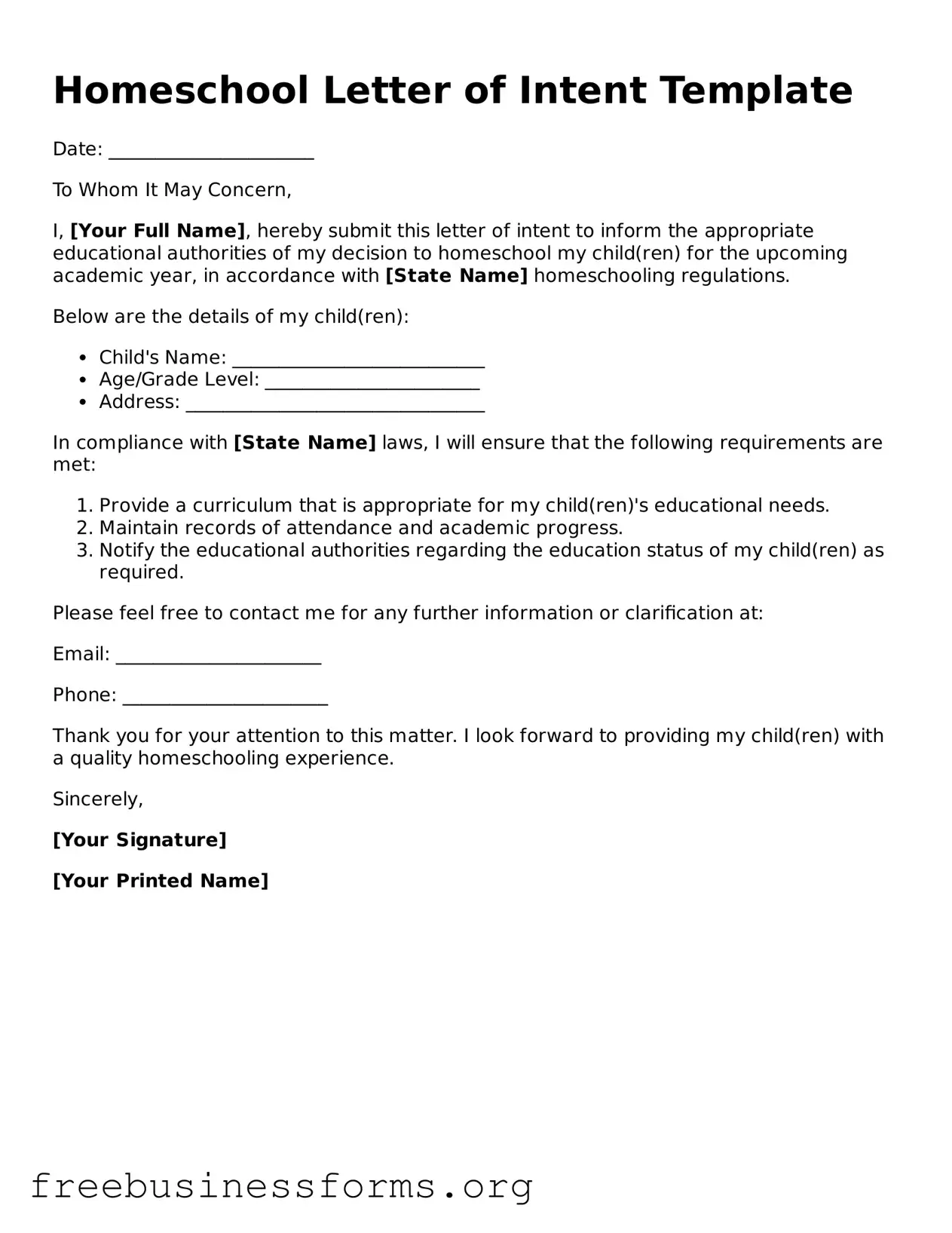Official Homeschool Letter of Intent Form
The Homeschool Letter of Intent form is a crucial document that parents or guardians submit to their local school district to officially notify them of their decision to homeschool their children. This form serves as a declaration of intent, outlining the family's commitment to providing an educational experience outside of the traditional school setting. Understanding the requirements and implications of this form can empower families to navigate the homeschooling landscape with confidence.
Open Form Here
